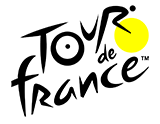- Stage town for the second time
- Commune in Isère (38)
- Population: 21,900 (Voironnais and Voironnaises)
This commune in Isère is primarily renowned for the famous Chartreuse liqueur made by the Carthusian monks, whose secret recipe has been kept for several centuries, but it’s also the birthplace of Olympic and world discus champion Melina Robert-Michon, as well as 2003 world handball champion Véronique Pecqueux-Rolland. Set close to Grenoble, Voiron has witnessed victories by two very significant Belgian Classics riders in the Critérium du Dauphiné: Stan Ockers in 1956 and Wout van Aert in 2019.
VOIRON
Saint-Bruno Church in Voiron
Construction: 1864 to 1883.
Style: Neo-Gothic.
History: the municipality requested the construction of Saint-Bruno Church in 1820 to address the overcrowding of Saint-Pierre Church, which had become too small. The project was entrusted to diocesan architect Alfred Berruyer, who designed numerous churches in Isère at that time. Costs were kept down by using moulded cement for the exterior decorations, which was a novelty at the time. The work was completed thanks to a large donation from the Carthusian monks, who financed the stained-glass windows, and to the generosity of the public. The church opened its doors in 1872.
Characteristics: this imposing church measures a total of 19 metres wide, 67 metres long and 22 metres high in the nave. The bell towers rise to 67 metres, corresponding to the total length of the building.
Listed as: historic monument since 2022
Chartreuse cellars
The Chartreuse cellars, located in Voiron, are one of the production and distribution sites for the liqueur of the same name made by the Carthusian monks. Coupled with a museum that traces the major periods in the history of the Carthusian Order from 1084 to the present day, the cellar site, which welcomes many visitors, also includes workshops, one of which is dedicated to the preparation of Chartreuse-based cocktails.
Bonnat Chocolate Factory
Founded in 1884, Bonnat is one of the oldest chocolate makers in France, established before the 20th century. Félix Bonnat, a former liqueur maker, opened his chocolate roasting workshop in Voiron in a former coaching inn. The idea came to him after discovering solid chocolate at the 1880 World's Fair. He then set off to meet producers in South America and Asia. For Tsar Nicholas II's visit to Paris, Félix Bonnat created the Muscovite plum cake, which won a gold medal at the World Fair that same year. Bonnat also enjoyed success with Pavés de Voiron, which were sold from 1901 onwards in 180 shops in France and even in the colonies. In 1911, he created the krugette, which became a classic French chocolate product under the name orangette. In 1934, Bonnat acquired the right to use another product from the Voiron region, Chartreuse. In 2017, the company had 30 employees and a turnover of nearly €4 million. The chocolate factory is one of the few in France to roast and conche its own beans, revive extinct varieties and promote fair trade. Chocolatier Bonnat also inspired Tim Burton when he created the world of the film Charlie and the Chocolate Factory. In 2008, Bonnat opened a shop in Tokyo and in 2017, its first Parisian boutique.
Mainssieux Museum
Established: 1989
History: the museum originated from the legacy of painter and artist Lucien Mainssieux (1885-1958) to his hometown. It was inaugurated in 1989. A new permanent exhibition was launched in June 2022, when the museum reopened. On the ground floor, cut-out silhouettes bring Mainssieux's memories and his era to life. On the first floor, two rooms are dedicated to Mainssieux the collector and to Un Voironnais à Paris. On the second floor, room 3 invites visitors to discover Une vie entre peinture et musique (A life between painting and music) and room 4 presents the relationship between Mainssieux and the Mediterranean. The collection consists mainly of works by Mainssieux and paintings from his collection of 19th and early 20th-century French painters, including works by Courbet, Corot and Renoir.
Label: Musée de France.












